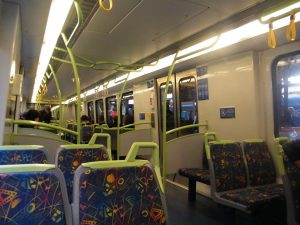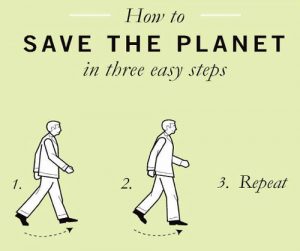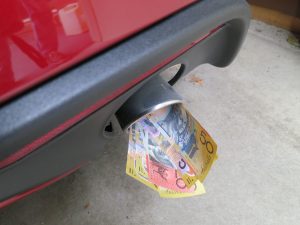| Average Australian home* | $17000 a year/17 hours a week per person* |
|---|---|
| Smart renter | $9000 a year/10 hours a week per person |
| Very smart renter | $2000 to $5000 a year/6-8 hours a week per person |
*The average Australian home is located in a capital city, where one person commutes to work via public transport and the other person commutes via car. This household has two cars that do a collective 25000 kilometres a year, one is owned outright and the other is financed [1]. Time spent travelling per week includes the actual travel time for 15000 kilometres of car travel, time spent working to pay for transport, extra time needed to exercise for the car driver and lost time compared to a public transport user who can do another activity while travelling.
Australia is a car nation where more than 84% of households have at least one car and 8% have no car (8% of people surveyed did not answer) [2]. You could say the car is the bread and butter of Australian passenger transport but like any buffet, it doesn’t make sense to fill up on bread without savouring some of the other options or at least looking at the pros and cons.
The true speed of your vehicle is not how fast it can go, but how fast it actually goes in traffic plus the time you have to spend working for it, maintaining it and doing other related chores.
If you clear $20 an hour after tax, you’ll still spend 8 hours a week or a whole work day to pay your half of the household’s car bill verses 1-2.5 hours a week as a very smart renter. Add in the time saved from going to the gym and you could cut out a whole work day each week.
Going car free is the holy-grail of cheap, clean, safe and healthy transport and can save the average Australian household $12000-$15000 a year.
It involves a mix of walking, riding, public transport and occasional car use if need be. It works well in major cities and even regional cities, especially if you choose to rent in an area close to public transport and amenities.
If you are not planning to get rid of your car anytime soon, there are options to reduce car costs, particularly if you can share a car as a household.
Consider that the above cost was calculated based on one adult in a household commuting via public transport to work. This means that one car sits idle for most of the week.
With a little effort, there’s no reason why a single car couldn’t be shared on the weekends, especially as couples or families tend to do recreational activities together.
We’ll briefly go through a few transport options for smart and very smart renters:
Self-Propelling ($0.05 to $0.10 per kilometre)
“carfreeday-2008” by Spacing Magazine is licensed under CC BY-NC-ND 2.0
For walking distances of 2 kilometres or less for regular trips and for cycling distances of 10 kilometres or less, getting around under your own steam is the ultimate in transportation.
It is super cheap, great for your physical and mental health, puts you in touch with your neighbourhood, actually saves you time in many cases (because you don’t need to spend near as much time working to pay for it) and has the convenience of a car meaning that you travel when you want to.
Here’s an interesting note on safety: The stats are in and based on the typical distances that regular walkers and cyclists cover, walking and cycling are at least as safe as car travel in Australia (and even safer if you have access good pedestrian and cycling infrastructure), yet the health benefits far outweigh the risks [3][4].
A UK study found that people who walk 10 kilometres a week or more reduce their risk of dying from heart disease by 36% whilst another UK study showed that cycling to work reduced all causes of death by a staggering 40% [4].
For more information on bike safety and setting up a good workhorse bicycle, see The commuter bike.
The only downsides of walking, riding and other self-propelled transport modes is exposure to the weather and distance limitations.
Both can be easily overcome in most cases; The commuter bike has an easy trick to deal with all weather conditions whilst walkers can carry an umbrella/spray jacket for wet weather.
In any case, being outdoors more often acclimatises you to all but the most extreme heat and cold. For covering bigger distances cheaply, there’s:
Public transport ($0.10-$0.20 per kilometre)

“Bayswater Train” by Tram Painter is licensed under CC BY-NC-ND 2.0
As of 2016 public transport and car travel were both roughly subsidised at $0.38 per kilometre, yet the private costs (that is, what you pay) of public transport are loads cheaper [5].
66% of Australians live in a capital city meaning that many of them will have access to public transport [6]. Bikes can be combined with public transport, something that we do from time to time and folding bikes can be used if you regularly combine bikes with public transport.
Public transport is 30 times safer than travelling the same distance by car and actually saves you time because you can read, write, learn a language, sleep or do a heap of other things whereas in a car all you can do is drive [6].
The only downside to public transport is that it is sometimes irregularly timetabled or some areas are not serviced at all. If this only affects you very occasionally, you can combine self-propulsion and public transport with:
Occasional car use (more than $0.50 per kilometre)
Taxis, rideshare cars, hire cars and car sharing are an expensive way to get around but if you do the vast majority of your trips without a car, than getting a car when you need it makes sense.
For example, we hire a car about twice a year to either pick up a large item or to travel to a location that is not practical without a car. This costs around $200-$400 which is much cheaper than car ownership and gives us the peace of mind that we can use a car if we really need one.
If you don’t own a car and rarely encounter situations where you need one, it can be really helpful if someone gives you a lift. But this should not be expected.
Living without a car is a personal choice and if you demonstrate your ability to be independent without a car in a variety of circumstances, this sets a really good example for people thinking about going car free.
Offer to pay your share and have a back-up plan (taxi for example) if someone can’t give you a lift.
Car ownership ($0.50 per kilometre)
Cars are great when fuel is cheap and plentiful, you’re a high income earner and there’s good roads with not much traffic. Even better if you have your own personal chauffeur.
These are conditions that don’t exist for most Australians but it’s understandable that for some, there’s not really a choice but to drive.
In some instances, cars make sense for trips where the distances are too long for cycling or walking, yet there’s not enough demand for good regular public transport in some locations or for certain times of the day.
The night shift worker returning home at 4am and the farmer are examples of this. In the case of some service providers (tradespeople for example), a car is necessary for regularly carrying heavy loads. So we’ve included a section on reducing car costs.
The take home message
Given the congestion times that many motorists encounter in Australian cities, the time taken to work to pay for car ownership, the health effects of driving a car and the actual speed that many cars do in congested traffic, cars are sometimes slower than the apparently “slow” modes of transport.
For example, we both work 4 days a week instead of 5 because of the money saved from using alternative transport modes that are not much slower and give us time to do things during transit.
We’ll assume that a smart renter is a household that locates themselves near to public transport or walking/cycling distance to amenities and work in a capital or regional city or even a well serviced town so that they can make do with one car that is cheap, durable and well maintained.
A very smart renter household locates themselves near to amenities and reasonably close to good public transport (depending on how often they use it) and combines this with walking/cycling which means they can go car free with the exception of a very small amount of paid car use each year.
Further Reading:
[1] https://theconversation.com/factcheck-does-the-average-australian-family-spend-up-to-22-000-every-year-on-transport-64233 [2] https://profile.id.com.au/australia/car-ownership [3] https://peopleforbikes.org/blog/the-first-major-academic-study-of-protected-bike-lanes-in-the-u-s-is-out/ [4] https://theconversation.com/cycle-walk-drive-or-train-weighing-up-the-healthiest-and-safest-ways-to-get-around-the-city-100238 [5] https://blogs.crikey.com.au/theurbanist/2015/04/23/what-costs-society-more-cars-or-trains/ [6] https://theconversation.com/cycle-walk-drive-or-train-weighing-up-the-healthiest-and-safest-ways-to-get-around-the-city-100238
